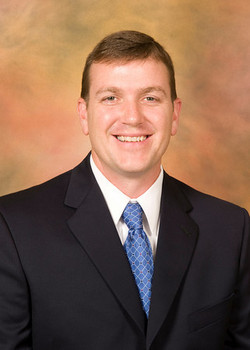Many states are working to introduce acclimation periods for the beginning of preseason football practices, which are helpful, but still deaths are occurring. The legislation can be easily interpreted by coaches and athletic directors, but they are not health care providers. As a profession we need to use the events of this preseason to advocate that Athletic Trainers are the most qualified provider to help prevent heat related deaths. Every high school should have an Athletic Trainer, period. Athletic Trainers are the most qualified health care provider for the advocacy of the health and safety of athletes in secondary school settings, but currently only 59% of secondary schools enlist the services of an athletic trainer.1
The recent heat stroke and hyponatremia deaths, much like those that have come before are completely preventable through patient education and the presence of an Athletic Trainer. No longer is it enough to train coaches to recognize and treat these injuries… That’s not their job. Athletic Trainers possess the appropriate knowledge for prevention, recognition and management of these conditions. In the rush of preseason we sometimes get tunnel vision and think hydration is the only preventative measure, but some of these preseason deaths have been due to hyponatremia.
Hyponatremia, caused by over hydration, is a condition that causes the cells in the body to rapidly swell and die. When the cells in the brain begin to swell they have nowhere to go inside the skull which leads to brain death. This is where education becomes a major key because the message that athletes continue to hear is “Hydrate! Hydrate! Hydrate!”, but really what they need is education about proper hydration. Hydration should be individualized based on sweat rate… and although it may be difficult for one Athletic Trainer to do this alone… if we teach our athletes how… we may save lives.
A great resource for Athletic Trainers and the public with regards to heat and hydration related conditions is the Korey Stringer Institute at the University of Connecticut. http://ksi.uconn.edu/
For more information about the cases this year here are the following links:
https://www.yahoo.com/health/tragic-teen-death-atributed-to-overhydration-94642750182.html
http://www.msnewsnow.com/story/26364634/jackson-prep-football-player-dies
http://articles.baltimoresun.com/2014-08-25/news/bs-md-ci-morgan-football-death-20140825_1_benita-meadow-marquese-meadow-heat-stroke
http://www.post-gazette.com/local/east/2014/08/07/Burrell-High-football-player-16-died-of-heart-tumor/stories/201408070355
http://www.firstcoastnews.com/story/news/local/2014/08/13/teen-football-player-dies-camp-blanding/14015853/
1) http://www.nata.org/sites/default/files/SecondarySchools.pdf

 RSS Feed
RSS Feed
